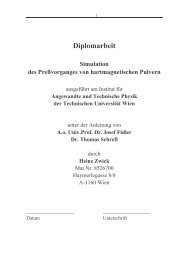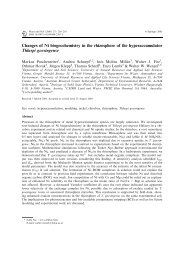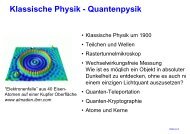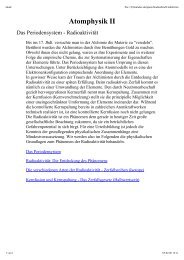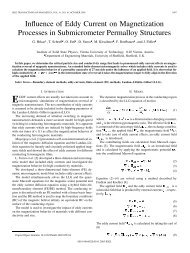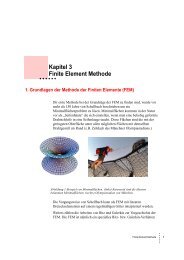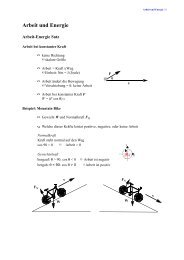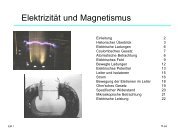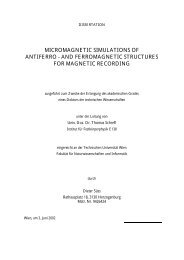Read Back Signals in Magnetic Recording - Research Group Fidler
Read Back Signals in Magnetic Recording - Research Group Fidler
Read Back Signals in Magnetic Recording - Research Group Fidler
Create successful ePaper yourself
Turn your PDF publications into a flip-book with our unique Google optimized e-Paper software.
Appendix A<br />
The theorem<br />
Appendix A<br />
∫grad f dV = � ∫ f dA<br />
(A.1)<br />
V ∂V<br />
is often used <strong>in</strong> literature, but it is normally limited to cont<strong>in</strong>uously differentiable functions.<br />
Nevertheless this relation is also frivolously applied for functions with first order<br />
s<strong>in</strong>gularities, as for example<br />
1<br />
f () r = with V<br />
r−r ′<br />
′∈ r . (A.2)<br />
We were not able to f<strong>in</strong>d any proof, which shows the validity of the above theorem for this<br />
function. Thus it is given here by our own.<br />
3<br />
Let us assume any constant vectorc<br />
∈ � and start from the equality<br />
divcf= c grad f . (A.3)<br />
Integration over the whole volume V gives<br />
divcfdV = � cgrad<br />
f dV . (A.4)<br />
∫ ∫<br />
V V<br />
If f has cont<strong>in</strong>uous first order partial derivatives we can apply the Divergence Theorem<br />
result<strong>in</strong>g <strong>in</strong><br />
� ∫ c f dA= ∫cgrad<br />
f dV . (A.5)<br />
∂V<br />
V<br />
c is constant and therefore it can be brought <strong>in</strong> front of the <strong>in</strong>tegral.<br />
c� ∫ f dA= c∫grad<br />
f dV . (A.6)<br />
∂V<br />
V<br />
Last equation holds for any c, therefore c can be cancelled, and the theorem (A.1) is verified.<br />
78



